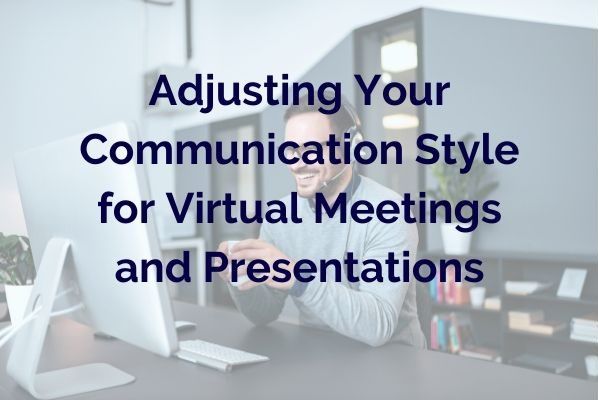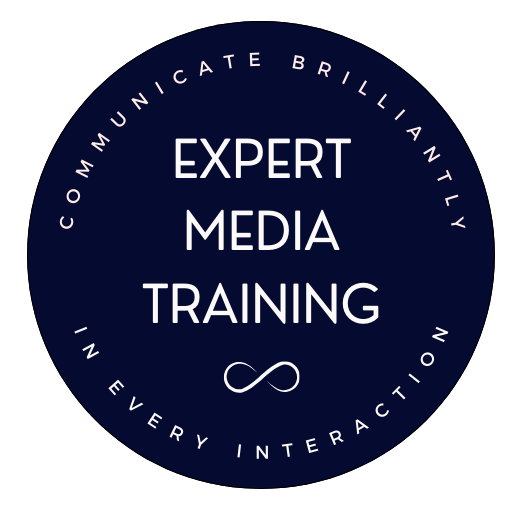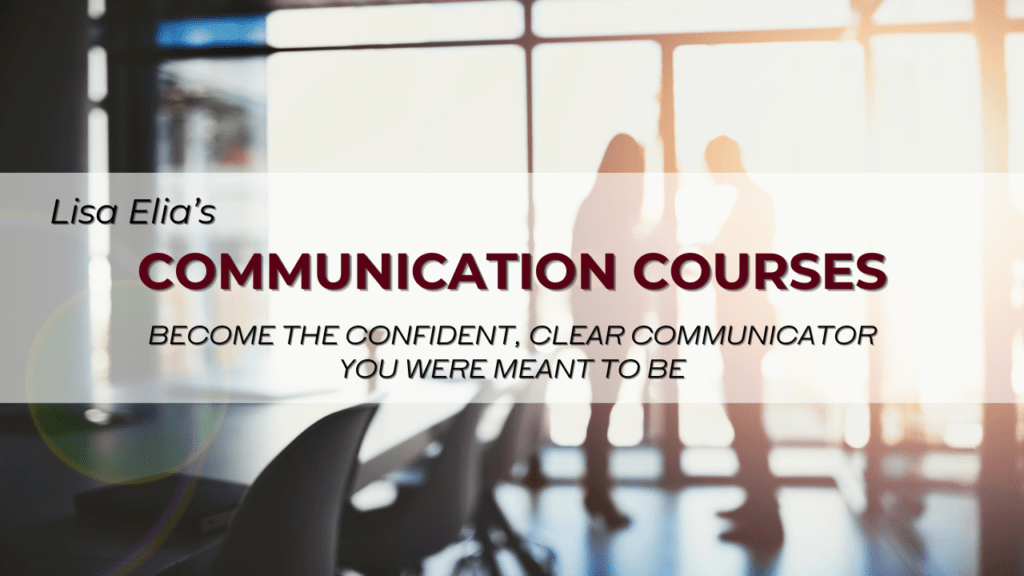
How to Be Effective in Virtual Meetings: Adjusting Your Communication Style
How to Be Effective in Virtual Meetings and Presentations: Adjusting Your Communication Style
 Video conferencing can be an extremely effective way to hold meetings and deliver presentations. People tend to try to focus solely on the meeting and ignore distractions because their face is zoomed in on, they are probably less likely to be looking at other devices or whispering to someone next to them.
Video conferencing can be an extremely effective way to hold meetings and deliver presentations. People tend to try to focus solely on the meeting and ignore distractions because their face is zoomed in on, they are probably less likely to be looking at other devices or whispering to someone next to them.
With this increased focus on one another and with the variation in the quality of each individual’s Internet connection and equipment, there are some shifts you can make to ensure your video calls and meetings run smoothly and effectively and that you deliver confidently and with polish.
Before Your Begin, Prepare Yourself Mentally.
It’s important to clear your head, get focused, and manage nervousness before meetings, interviews, and presentations so that you can be at your best. I put my clients through a series of brief exercises to help them do this and to warm up their bodies and vocal cords. For now, use some of the techniques you might already use that will help you achieve a state of being energized and at ease, such as diaphragmatic breathing, listening to music, and exercising to relieve stress and sharpen your mind.
Greet People Warmly with a Smile.
 Somehow, most people look much more serious on video than in person. Greet people warmly with a smile at the start of the video meeting or presentation just as you would if you were welcoming them into your home.
Somehow, most people look much more serious on video than in person. Greet people warmly with a smile at the start of the video meeting or presentation just as you would if you were welcoming them into your home.
How much or how often you smile during a meeting will depend on the content and tone of the meeting. Aim to maintain a pleasant resting face.
Don’t Show Shock or Awe Over What You See.
You will see someone’s home or office, which may be messy, cluttered, or more luxurious than you might expect. Someone may attend a meeting having made questionable wardrobe choices. Try to not show surprise, shock or awe over what you see as this could make them uncomfortable. A nice, simple compliment is fine, if appropriate.
Maintain Eye Contact and Avoid Looking Away Too Often.
If you have placed your webcam at eye level or slightly above, you should be able to look at the people you are talking to on your computer monitor and it will seem as if you are looking into their eyes. When in an in-person meeting, it’s normal to look away periodically to gather your thoughts. It’s okay to do this a little bit on video calls, but if you do it too abruptly or too often, people might wonder what you’re looking at and they may think you’re distracted by something that’s going on around you.
If you will need to look at another device or take notes, tell participants on the video call that you will be doing so, so they know why you are looking down or away periodically.
Listen Attentively.
The added challenge of voices being transmitted electronically and potential feedback means you should listen more closely than usual.
Pause More Often Than You Would in Person, Especially on Group Calls.
 Since there can be delays in video and sound transmission on video calls, pausing a bit more than usual will give people time to assimilate your message and to respond. Pausing periodically is especially important on group calls where different people may want to speak.
Since there can be delays in video and sound transmission on video calls, pausing a bit more than usual will give people time to assimilate your message and to respond. Pausing periodically is especially important on group calls where different people may want to speak.
Zoom and other videoconferencing tools have features that allow people to “raise their hands” to indicate to the host that they want to speak, but with smaller groups, especially those with high-powered individuals, they may not want to “raise their hands”.
You May Need to Enunciate More and Slow Down a Bit.
If you tend to speak quickly or run your words together, you may need to enunciate more and slow down a bit to be understood well on video calls. This is something to practice daily. Elevating your communication habits in all situations will prepare you to be a better communicator when participating in video meetings and presentations.
End Your Video Call Clearly and Smoothly.
When the video call is coming to an end, clarify the next steps to be taken, allow everyone to say their thank-yous and goodbyes and then, if you are the host, click to end the meeting quickly. Know where this function is located on your screen so you’re not caught on video fumbling and searching for it.
Be Sure Your Communication and Presentation Skills are Up to Speed.
Whether you are communicating through video, by phone, or in person, the ability to communicate clearly, confidently, and with authority over your topic or material is what’s needed to succeed.
This is part 2 of our series of blog posts to provide tips on how to communicate more effectively when using video platforms. To read part 1 of this blog series, How to Be Effective in Virtual Meetings and Presentations: Preparing Your Set-up, Your Environment, and Yourself, click here.
To discuss presentation training, media training, investor pitch coaching, or video communication skills training, contact us at 310-479-0217.
To download our free Media Interview Guide and other tools, click here.
To check out our online courses, click here.
For a complimentary consultation to discuss private training for yourself or your team, click here.

This post was written by Lisa Elia, a media trainer, presentation trainer, pitch coach, communication expert, and speaker. She trains clients around the world for media interviews, speeches, internal and external presentations, panels, investor presentations, and promotional videos, and provides executive and team communication coaching.
With more than 25 years of experience, Lisa has prepared clients for interviews with TODAY, GMA, The Wall Street Journal, CNN, ESPN, and hundreds of other outlets. Lisa has shared her expertise with national media outlets that include Inc., Entertainment Tonight, E!, and many others. Clients include entrepreneurs, Fortune 500 companies, and everything in between as well as athletes, celebrities, and other public figures.


